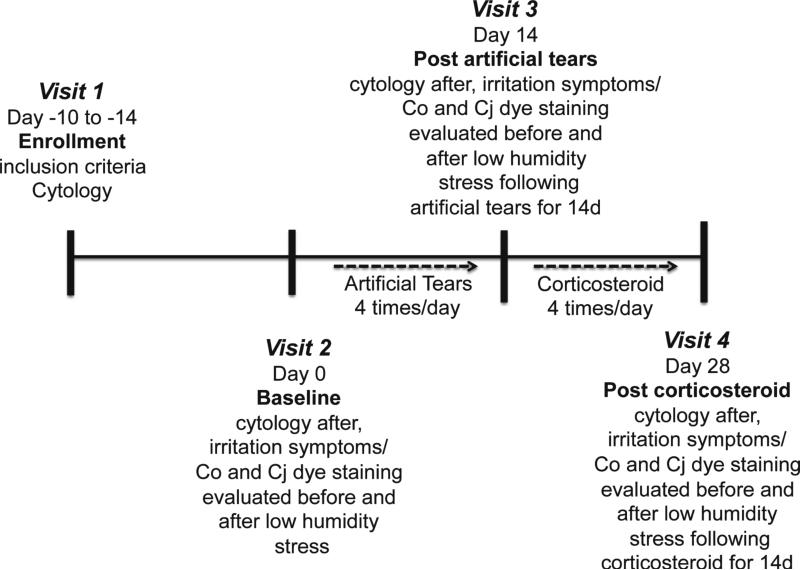Figure 1.
Summary of study design to investigate the effects of dry eye therapies on environmentally induced ocular surface disease. The study consisted of 4 visits. Study visit 1 (enrollment) established that subjects met inclusion criteria for signs and symptoms and conjunctival cytology was performed; at study visit 2 (baseline), irritation symptoms and corneal and conjunctival dye staining were measured before and after experimental low humidity stress and cytology was performed after the stress; at study visit 3 (post artificial tears) - irritation symptoms and corneal and conjunctival dye staining were measured before and after experimental low humidity stress in subjects treated with preservative-free artificial tear drops 4 times daily for 14 days, cytology was performed after the stress; at study visit 4 (post corticosteroid) - irritation symptoms and corneal and conjunctival dye staining were measured before and after experimental low humidity stress in subjects treated with corticosteroid (dexamethasone 0.1%) drops 4 times daily for 14 days, cytology was performed after the stress. Co = corneal, Cj = conjunctival

